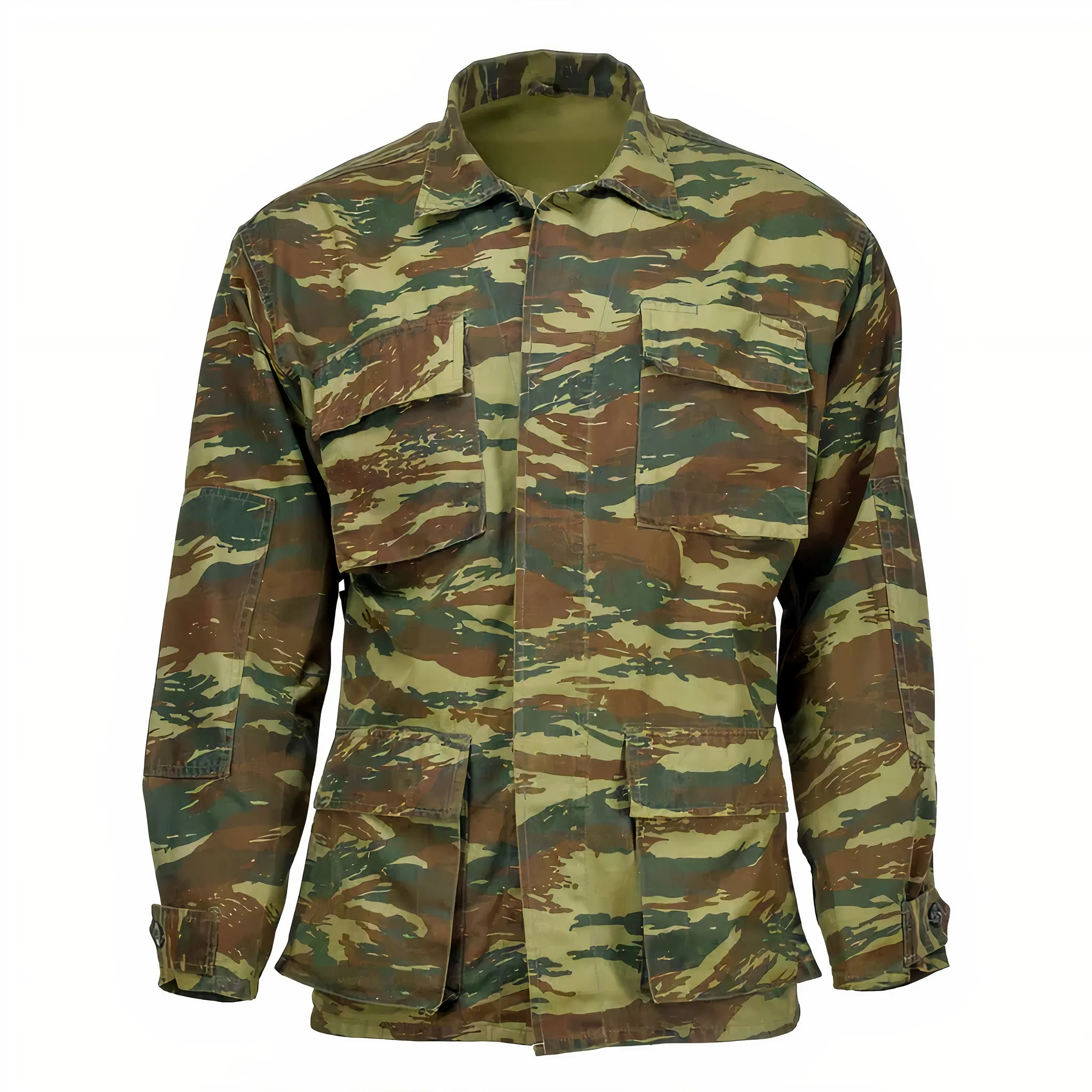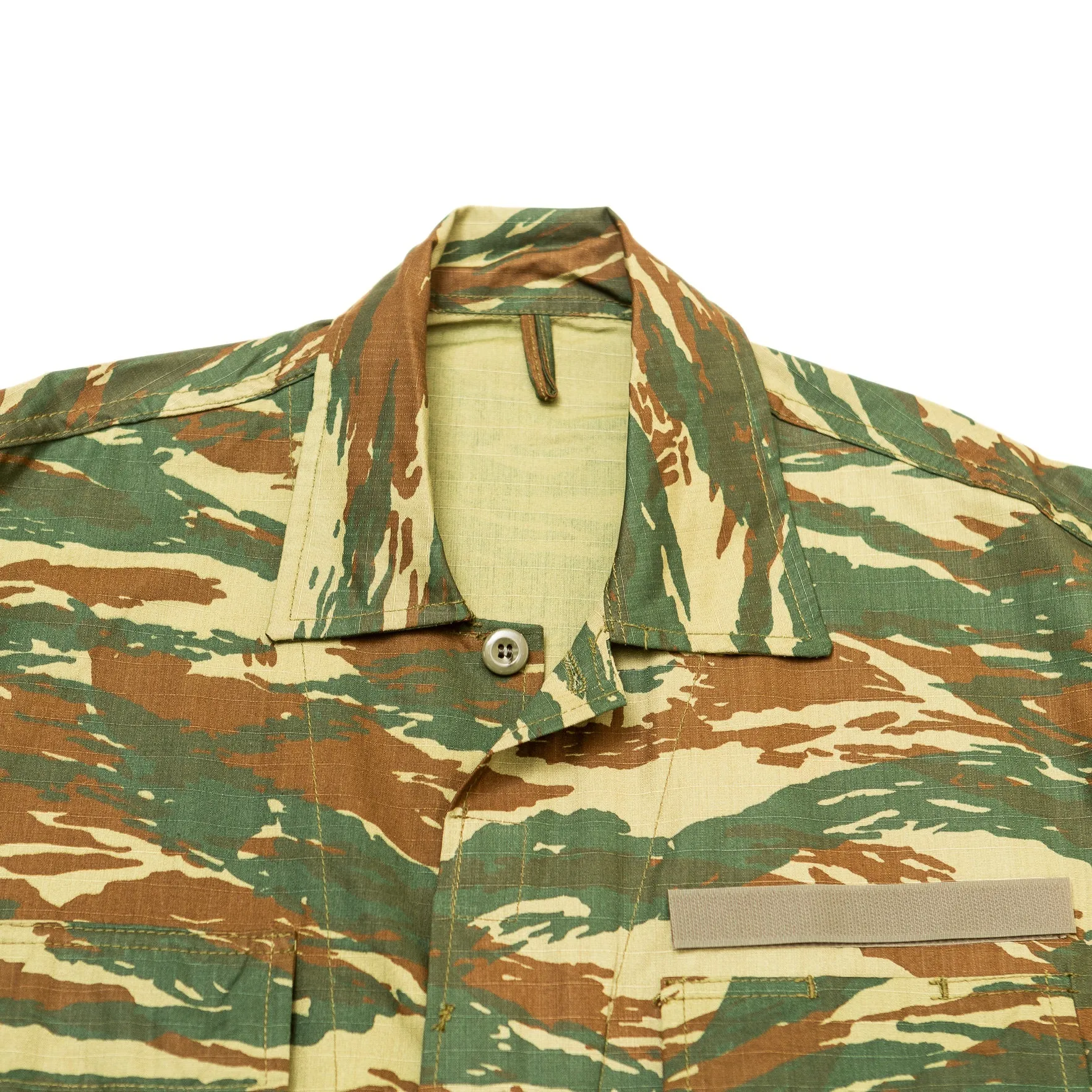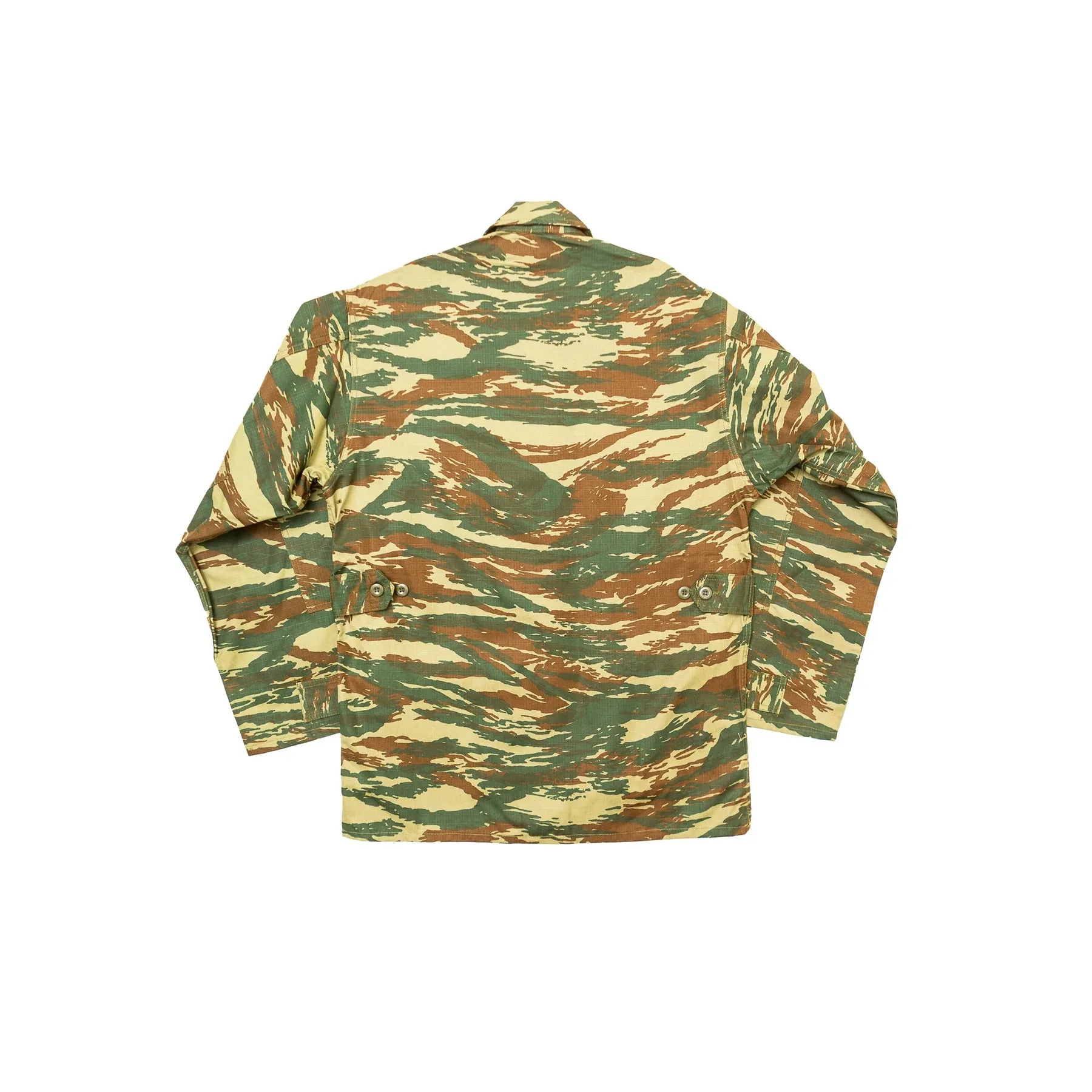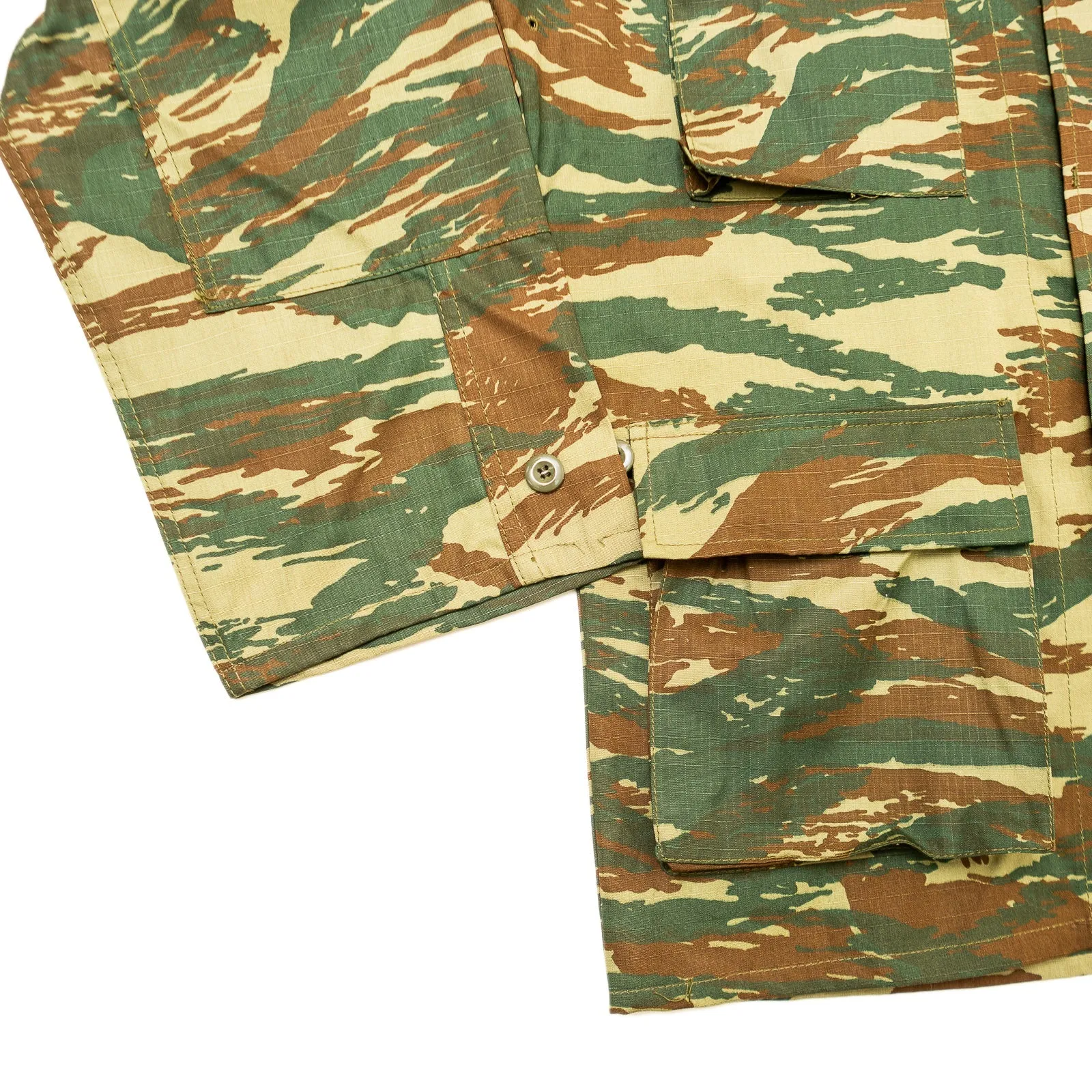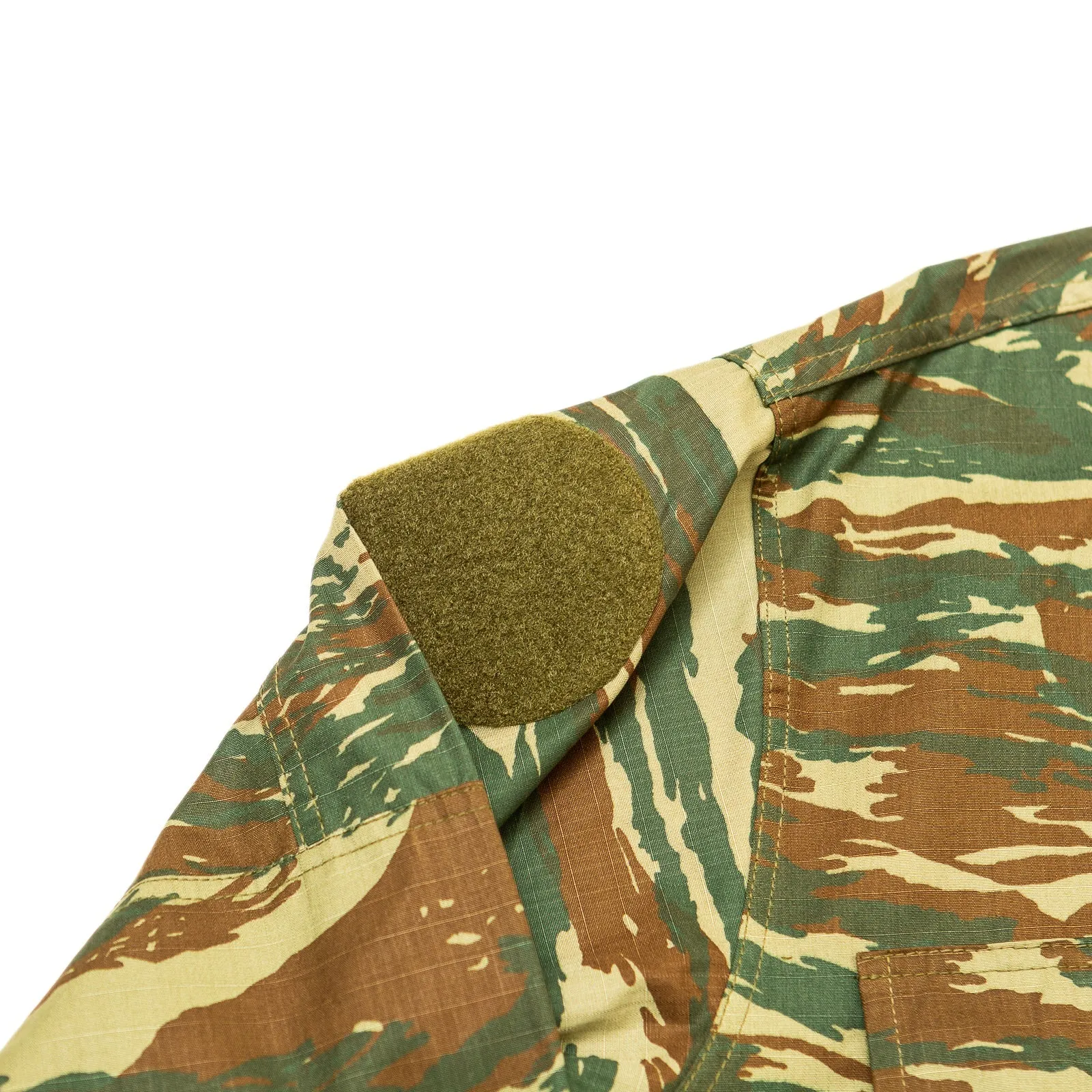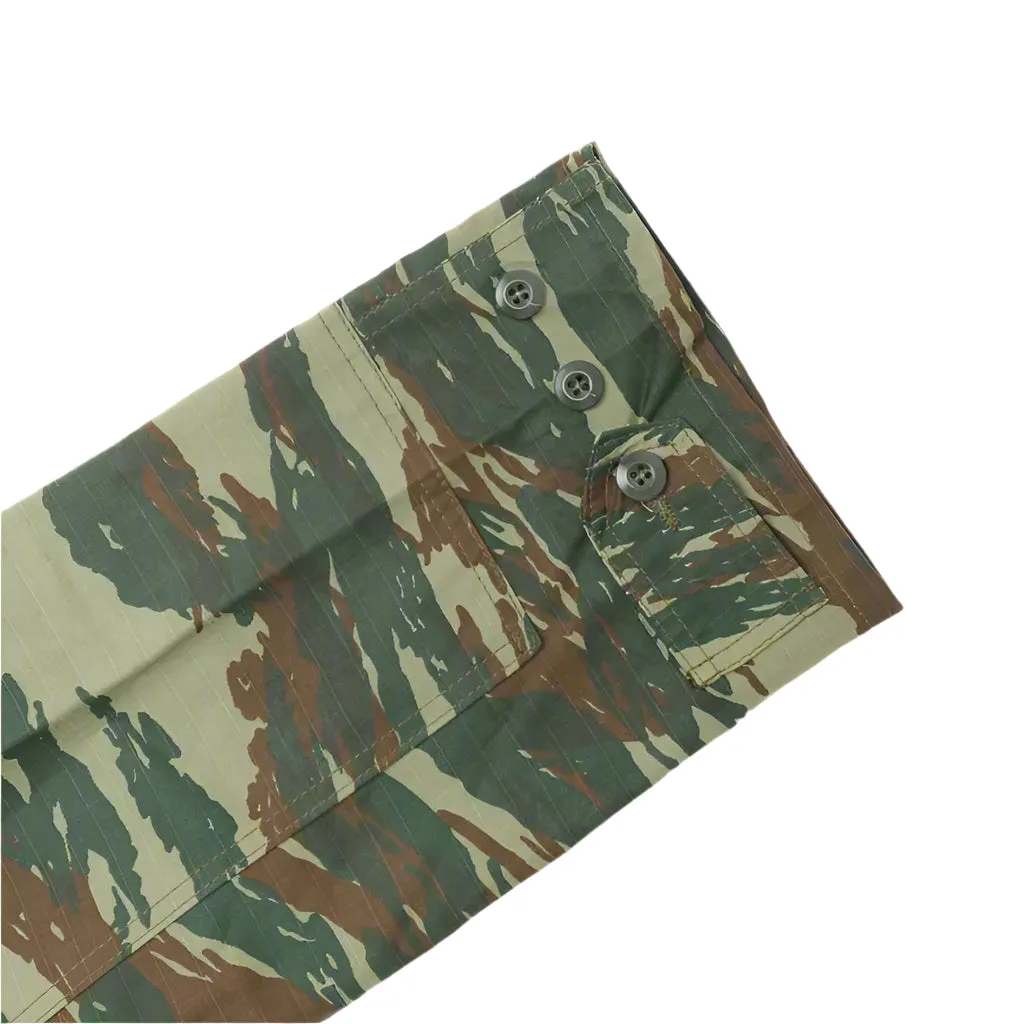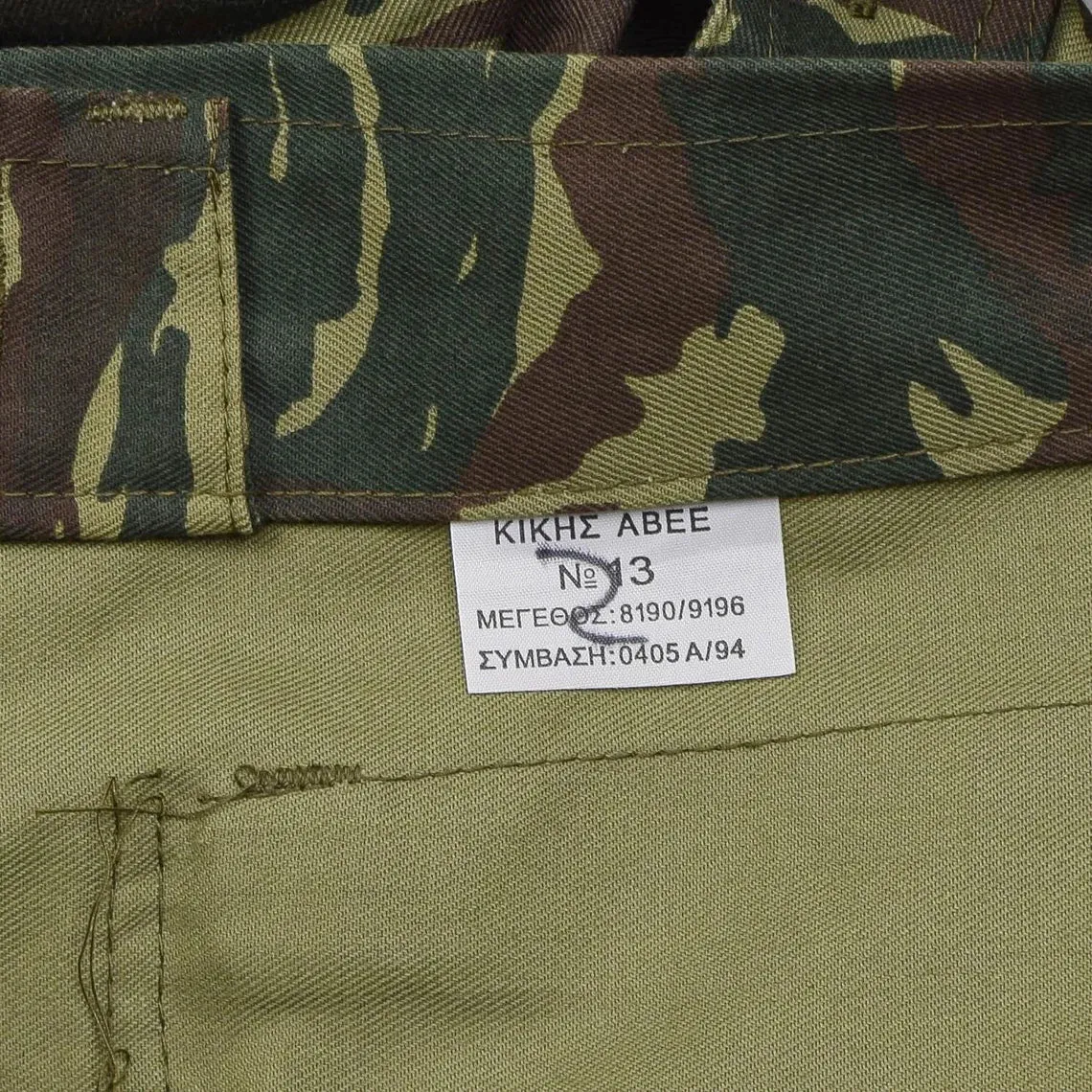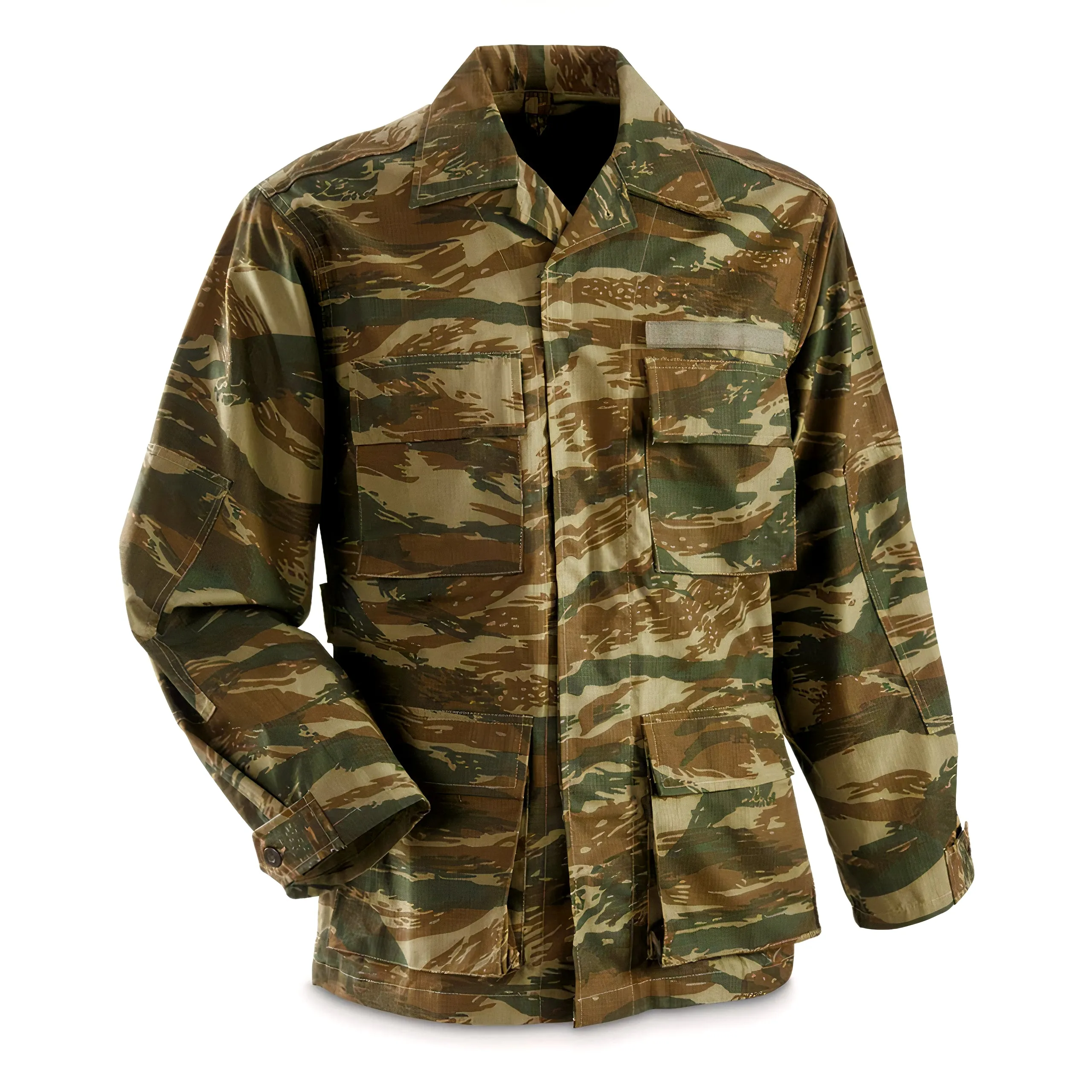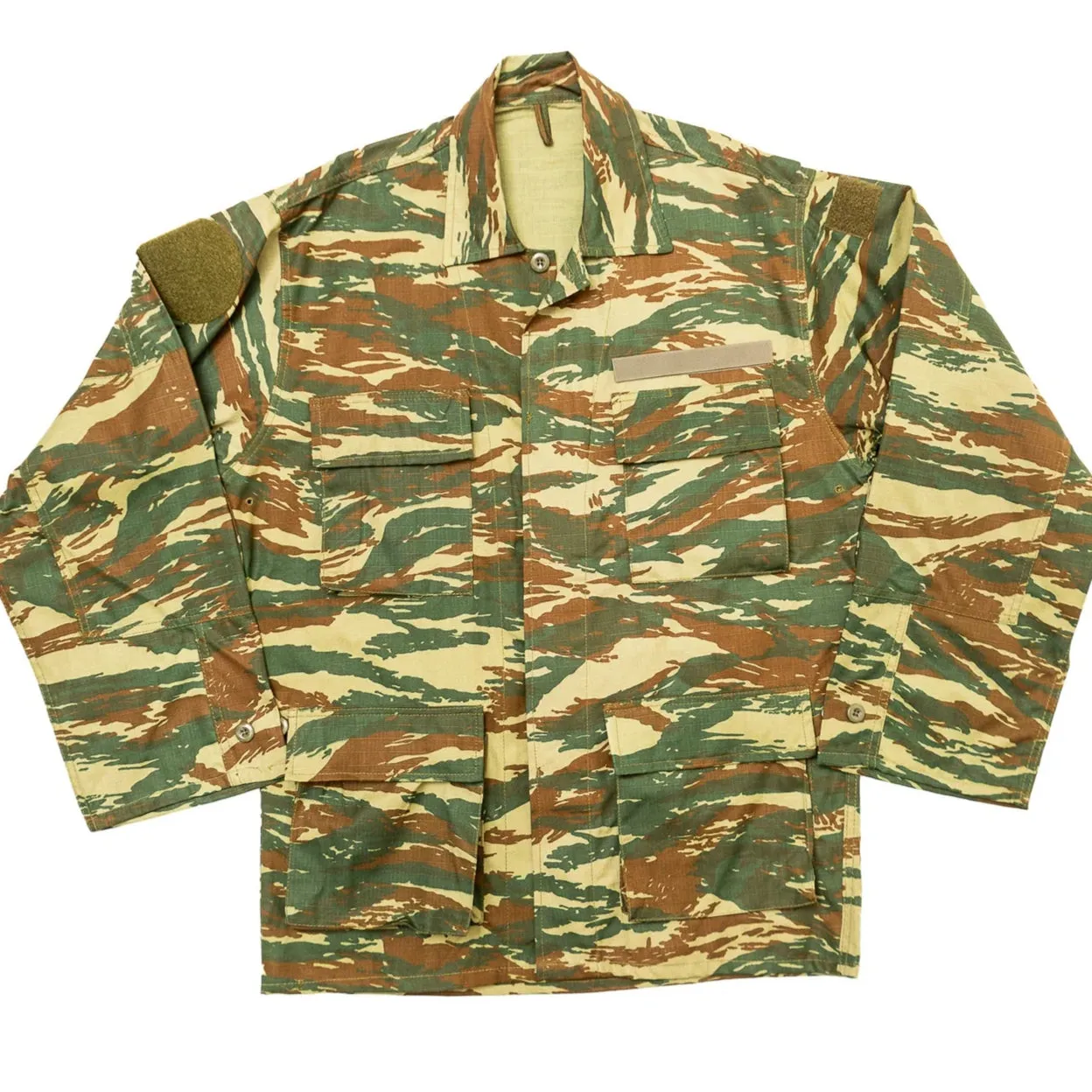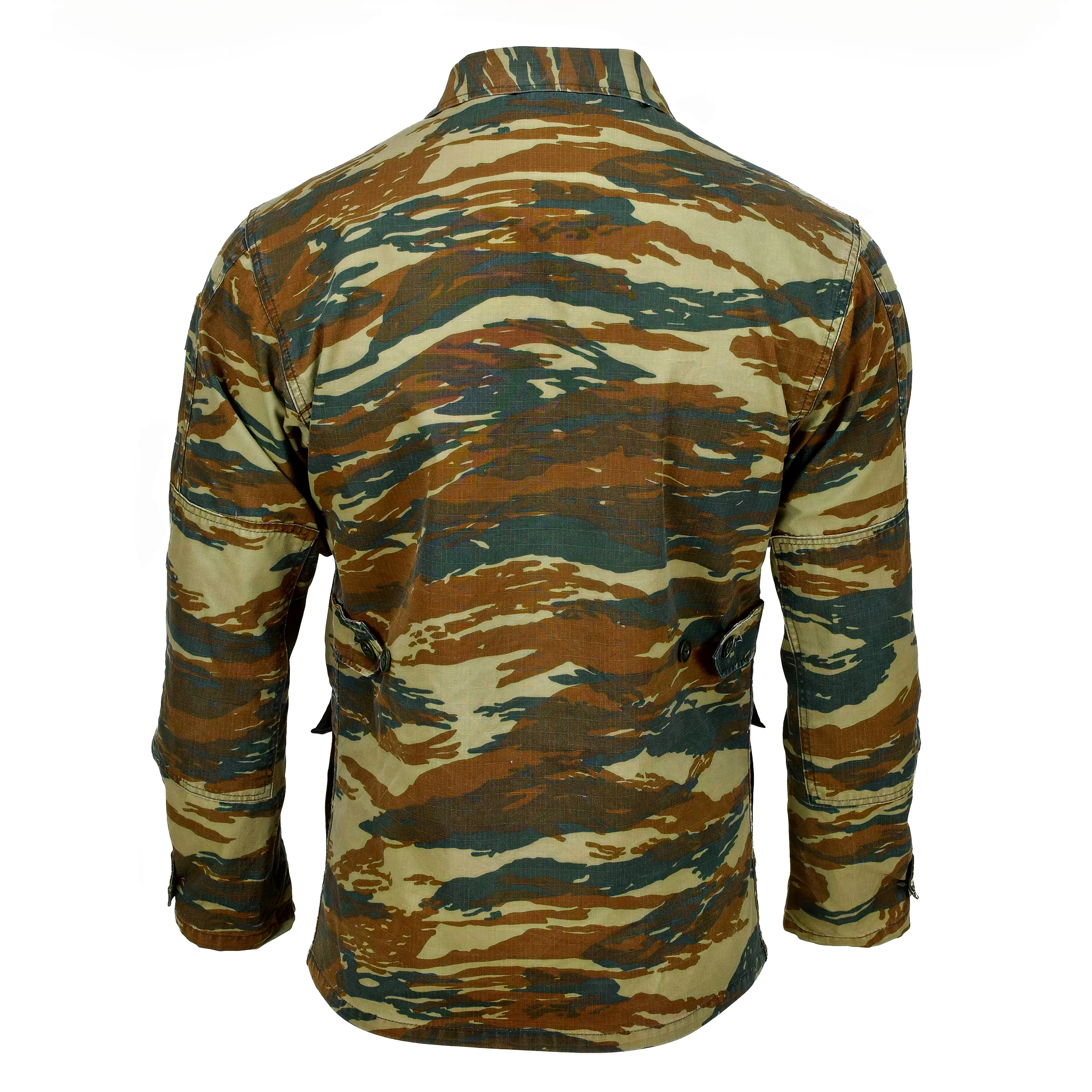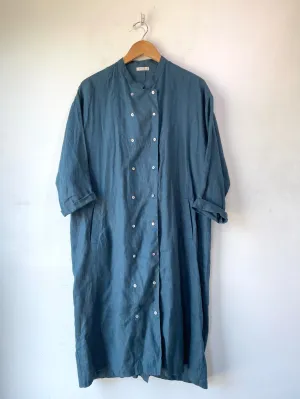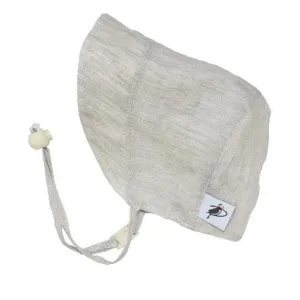The Lizard pattern (also known as Leopard) was a French design derived from the WWII British camo called Denison smock. It was produced industrially with smaller brushstrokes and various tones of green, khaki & brown. Most versions have a strong horizontal orientation though some are vertical.
While it was influenced by Denison, this pattern took on a life of its own creating a whole family of variations & derivatives in countless world militaries. It’s most famous for its role as the uniform of French paratroopers in the Indochina (Vietnam) & Algerian colonial wars and later with the Portuguese in Africa when their colonial empire subjects fought wars of liberation in places like Angola and Mozambique.
Suit up in style with our Hellenic Greek Army Field US Style BDU Lizard Camo Field Jacket! This unique jacket features the iconic Lizard pattern, Show off your quirky side with this drippy Mediterranean camouflage jacket. It has been used by the passionate and energetic Greek Army since the 1970s. The near exact copies of the French Lizard pattern are still in use, with some variations for special units. Stay camouflaged and blend in with this long-lasting and versatile jacket. Own a piece of military history.
Now over the decades, there have been some changes to this camouflage, including its colors and shapes. There have been other variants issued for use by certain special units, including one pattern for the Greek Navy Special Forces. Another blue, gray, and purple pattern was developed for the Greek Navy and Greek Air Force. Despite the development of a pixelated Lizard-inspired pattern, the original camouflage is still in use by the Greek Armed Forces but the uniforms are not the same style.
The 411
- Country of origin: Greece
- Era: 1970's-1990's
- Horizontal stripe "Lizard" pattern
- 4 button flap pockets
- Button front with hook-and-loop tabs
- Double stitched for strength
- Adjustable wrists
- Reinforced elbow pads
- Material: Cotton/polyester blend
- Velcro patch for name
- Color: Hellenic Lizard Camo
NOTE: Tones may vary depending when and by whom it was made for the Hellenic Army

